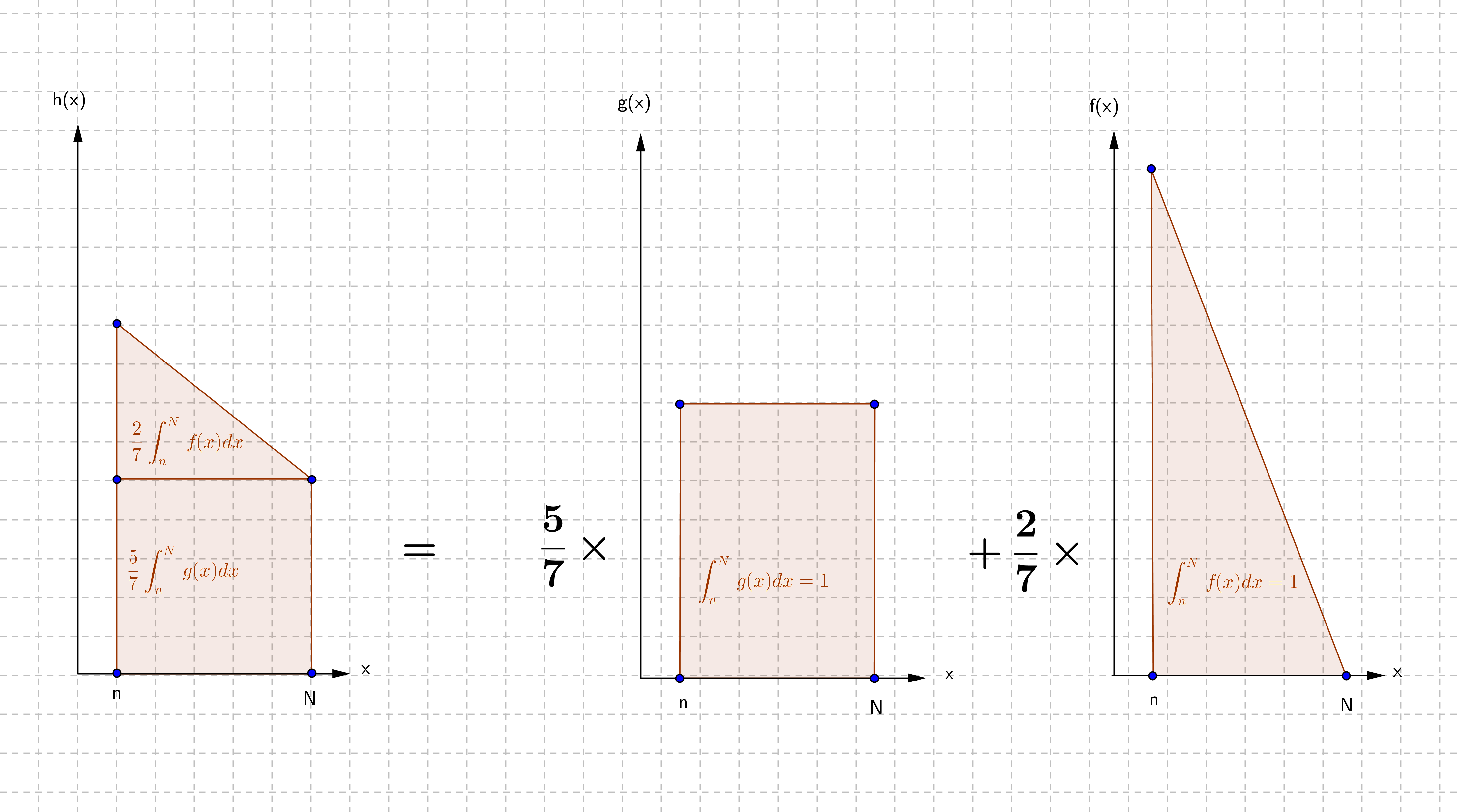I want to the derive the PDF which looks like the sum of a triangular and uniform distribution which looks like this:
To do this I have simply added the PDFs for the rectangular and triangular parts, over the range $[n,N].$
A triangular distribution, with these bounds, has the following PDF:
$$f(x) = \frac{2(N-x)}{(N-n)^2}$$
The scaled uniform distribution has the following PDF:
$$g(x) = \frac{1}{N-n}$$
Then (I believe), the compound distribution is simply:
$$h(x) := f(x) + g(x) = \frac{3N -2x -n}{(N-n)^2}$$
However, I do get a bit confused here, since this distribution needs to be normalised, which is simply done as so:
$$h_{\text{norm}}(x) = \frac{1}{\int_x h(x)} h(x)$$
Does this seem reasonable, or am I wildly off-chart here?
This is a related question but it seems very complicated, for what should be quite simple.


